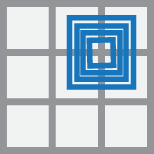bagOfFeatures
Bag of visual words object
Description
You can construct a bag of visual words for use in image category classification, and image retrieval.
Creation
Syntax
Description
bag = bagOfFeatures( returns a
bag of features object. The imds)bag output object is generated
using samples from the imds input. By default, the visual
vocabulary is created from SURF features extracted from images in
imds.
bag = bagOfFeatures(
returns a bag of features that uses a custom feature extractor function to
extract features from images in imds,'CustomExtractor',extractorFcn)imds.
extractorFcn is a function handle to a custom feature
extraction function.
bag = bagOfFeatures(
specifies options using one or more name-value arguments in addition to any
combination of arguments from previous syntaxes. For example, imds,Name=Value)bag =
bagOfFeatures(imds,Verbose=true) additionally sets
Verbose to true.
This object supports parallel computing using multiple MATLAB® workers. Enable parallel computing from the Computer Vision Toolbox Preferences dialog box. To open Computer Vision Toolbox™ preferences, on the Home tab, in the Environment section, click Preferences. Then select Computer Vision Toolbox.
Input Arguments
Properties
Object Functions
encode | Create histogram of visual word occurrences |
Examples
References
[1] Csurka, G., D. Christopher, F. Lixin, W. Jutta, and B. Cédric. "Visual categorization with bags of keypoints." Workshop on statistical learning in computer vision, ECCV, 2004, pp. 1-2.
[2] Nister, D., and H. Stewenius. "Scalable Recognition with a Vocabulary Tree." Proceedings of the IEEE Computer Society Conference on Computer Vision and Pattern Recognition, 2006, vol. 2, pp. 2161–2168.
Extended Capabilities
Version History
Introduced in R2014b
